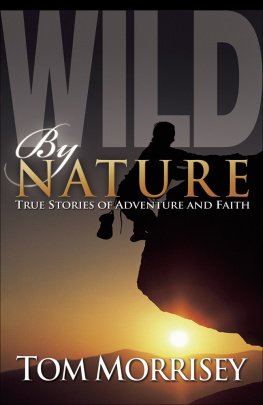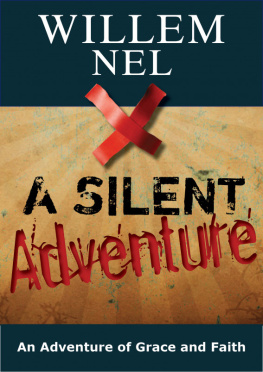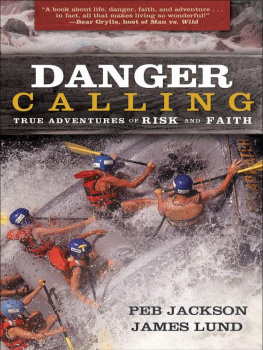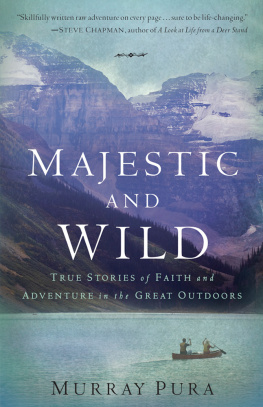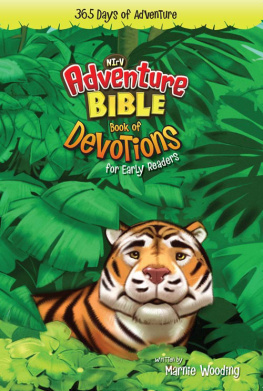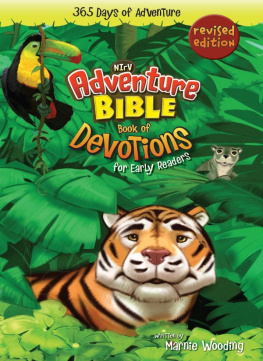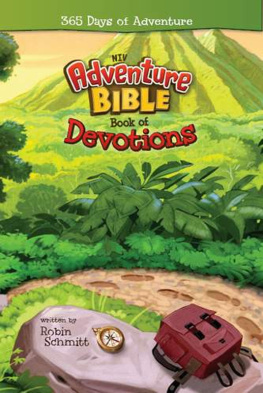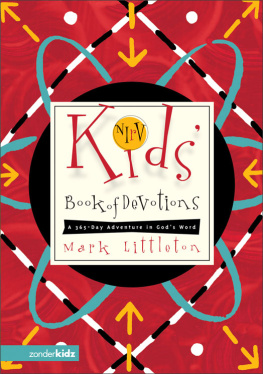Tom Morrisey - Wild by Nature: True Stories of Adventure and Faith
Here you can read online Tom Morrisey - Wild by Nature: True Stories of Adventure and Faith full text of the book (entire story) in english for free. Download pdf and epub, get meaning, cover and reviews about this ebook. year: 2001, publisher: Baker Publishing Group, genre: Non-fiction. Description of the work, (preface) as well as reviews are available. Best literature library LitArk.com created for fans of good reading and offers a wide selection of genres:
Romance novel
Science fiction
Adventure
Detective
Science
History
Home and family
Prose
Art
Politics
Computer
Non-fiction
Religion
Business
Children
Humor
Choose a favorite category and find really read worthwhile books. Enjoy immersion in the world of imagination, feel the emotions of the characters or learn something new for yourself, make an fascinating discovery.
- Book:Wild by Nature: True Stories of Adventure and Faith
- Author:
- Publisher:Baker Publishing Group
- Genre:
- Year:2001
- Rating:4 / 5
- Favourites:Add to favourites
- Your mark:
- 80
- 1
- 2
- 3
- 4
- 5
Wild by Nature: True Stories of Adventure and Faith: summary, description and annotation
We offer to read an annotation, description, summary or preface (depends on what the author of the book "Wild by Nature: True Stories of Adventure and Faith" wrote himself). If you haven't found the necessary information about the book — write in the comments, we will try to find it.
Wild by Nature: True Stories of Adventure and Faith — read online for free the complete book (whole text) full work
Below is the text of the book, divided by pages. System saving the place of the last page read, allows you to conveniently read the book "Wild by Nature: True Stories of Adventure and Faith" online for free, without having to search again every time where you left off. Put a bookmark, and you can go to the page where you finished reading at any time.
Font size:
Interval:
Bookmark:
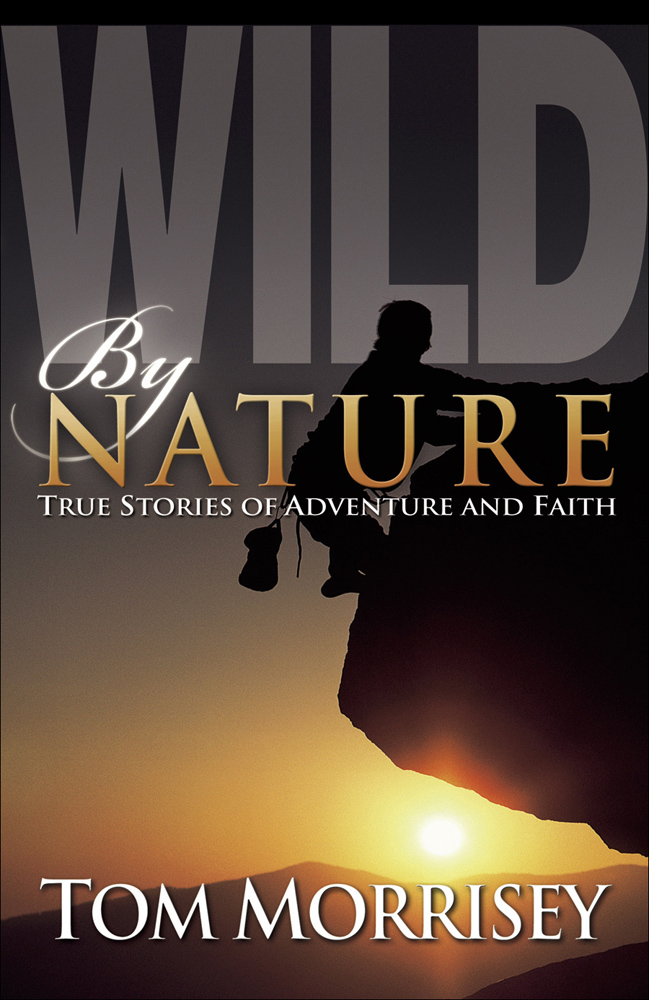

2001 by Tom Morrisey
Published by Baker Books
a division of Baker Publishing Group
P.O. Box 6287, Grand Rapids, MI 49516-6287
www.bakerbooks.com
Ebook edition created 2013
All rights reserved. No part of this publication may be reproduced, stored in a retrieval system, or transmitted in any form or by any meansfor example, electronic, photocopy, recordingwithout the prior written permission of the publisher. The only exception is brief quotations in printed reviews.
ISBN 978-1-4412-4436-9
Library of Congress Cataloging-in-Publication Data is on file at the Library of Congress, Washington, DC.
I remember still a cold November morning when my father took me out to shoot a fox that had been menacing the chickens on an elderly relatives farm.
The picture stays with me because I was seven years old that November, and the shooter of the fox was to have been methe first time, ever, that I would be allowed to fire upon anything other than tin cans or paper targets. I remember how grown-up I felt, waking long before sunrise to put on woolens and hunting clothes, and then eating the breakfast my father had made, the eggs fried crisp in the bacon grease, still sizzling as I carried them to the table. I can still picture us later that morning, creeping on hands and knees over a small knoll and seeing the fox, her coat golden-red against the stark white snow, a vivid contrast even in the gray light of a winter dawn. And I can still feel the .22s wooden stock, smooth and cold as I pressed it against my cheek.
And then I remember the steam rising from the den as two young foxes emerged, more fur than form, wrestling and tugging at one another in a post-breakfast foray. And how my father, seeing this, rose to his feet and shooed the trio back into their den.
Disappointed at having my shot spoiled, I asked why he had done it, and he told me, We couldnt kill her. She had cubs.
Still dejected, I asked, But wont they grow up and raid the henhouse, as well?
And I remember his response.
Probably, he said. But they havent yet, and we need to give them a chance.
From this, I learned that nature and our adventures can teach us things, if only we will open our eyes and our earsand our heartsto their lessons.
I remember also the Bible we had in our house at the time, a thick, heavy tome, ideal for pressing leaves and weighting down freshly pasted school projects. When I asked my mother about it, she told me it was Gods book, which I interpreted as meaning that it was His personal property, and I was not to be nosing about in it.
Years later, I would understand that I had been correct in my first assumption but 100 percent wrong in the second. The Bible is Gods property, but, far from desiring that we stay away, He wants us to be nosing about in it.
By the time I discovered this, I would be a man, and I read the Bible secularly several times, treasuring it as the font from which so much of modern literature has sprung. Then my heart was opened to its true naturethat of the greatest love letter ever known, written by the only One Who can love us perfectly. And, like a person with a cherished love letter, I have been reading and rereading it ever since.
This is a book of nine true adventuresthings that have happened to me in the course of exploring the twin worlds of nature and sport. That I have had so many is probably due not to my dauntless or courageous nature but to the fact that I am a slow learnermost adventures are, after all, the results of errors in judgment.
In the section following each story, I look at what God has to say on the subject. This is not to say that I am privy to any inside information from the Almighty. But the Bible is a wonderful picture of that part of the mind of God that He desires to be known to man, and the Bible will speak extensively on all manner of subjects if one only has the patience to search it. And, because the Bible is the principle manner in which God communicates with us, any truly God-authored doctrine or fundamental of belief can always be supported by passages from Scripture. That being the case, I mention things said in the Bible often in this book and, when I do, I provide a reference such as thisJohn 3:16telling where in Scripture I found the information conveyed.
To those who are new to the Bible, such references may mean nothing (and we have all been there at some point), but they are easily demystified: The proper noun beginning the reference (the John in John 3:16) refers to a section of the Bible called a Book, and most Bibles will list the page numbers of their Books in a contents page or pages. This is then followed by a chapter reference (the 3 in John 3:16), appearing in most Bibles as a larger number at the beginning of a section of text. The final number, the verse number, will be fairly tiny in most Bibles, but will come at the beginning of a sentence, group of sentences, or a phrase.
If you look up the verse weve cited here, youll find words to this effect: For God so loved the world, that he gave his only begotten Son, that whosoever believeth in him should not perish, but have everlasting life.
I offer this brief introduction to the Bible because, while the references given may make it seem that it is a companion volume to this book, the reverse is actually truethis book was written as a companion volume to Gods Book. The Bible has astounded people with its big ideas for a great many centuries, and if my book opens even one fresh pair of eyes to that great set of wonders, it will have been well worth the writing.
One final note. The title of this book comes from Romans 11:24, in which the apostle Paul writes to Gentile Christians living in the city of Rome. In it, he makes an agricultural metaphor, referring to members of the twelve tribes of Israel as the natural branches of the tree of Gods chosen people and to the Gentiles as branches of a wild treea tree that is wild by naturegrafted in. Like many Bible verses, this has a modern application if one thinks of those who were raised in Bible-believing Christian households as the natural branches and those who came to belief much later in life (such as myself) as the wild.
Regardless of whether you come from the natural tree or the wild, this book is for you. I offer it with the hope that it will encourage you on the greatest adventure of them all.
For if thou wert cut out of the olive tree
which is wild by nature, and wert graffed
contrary to nature into a good olive tree:
how much more shall these, which be the natural
branches, be graffed into their own olive tree?
R OMANS 11:24
Pride goeth before destruction, and an haughty spirit before a fall.
P ROVERBS 16:18
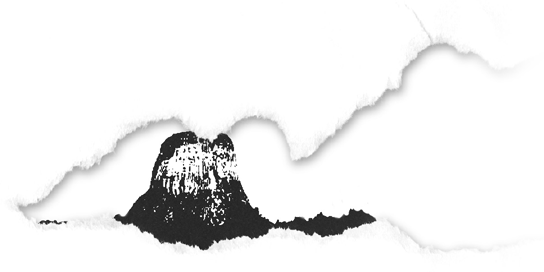
The giant stone pillar known as Devils Tower, Wyoming, would be remarkable in any setting. In the place where God put it, it is especially so. The low country of eastern Wyomingthat region, say, from Cheyenne to the Montana borderis remarkable for the soft, rolling counterpoint it provides to the Bighorn Mountains and the rugged Rockies to its west. Placed amidst such pastoral surroundings, the weathered-rock citadel is a geological exclamation point, fit to take the breath away.
It was during a road trip through the West that I first saw Devils Tower. Greg Lutz and I had just finished climbing in Colorados Rocky Mountain National Park, occupying ourselves principally with Longs Peak, the highest mountain in the Front Range andfrom the eastern face, at leastone of the most challenging.
Font size:
Interval:
Bookmark:
Similar books «Wild by Nature: True Stories of Adventure and Faith»
Look at similar books to Wild by Nature: True Stories of Adventure and Faith. We have selected literature similar in name and meaning in the hope of providing readers with more options to find new, interesting, not yet read works.
Discussion, reviews of the book Wild by Nature: True Stories of Adventure and Faith and just readers' own opinions. Leave your comments, write what you think about the work, its meaning or the main characters. Specify what exactly you liked and what you didn't like, and why you think so.

